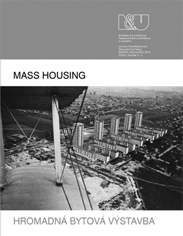ARCHITECTURE AS A PEDAGOGICAL OBJECT: What to preserve of the Przyczółek Grochowski Housing Estate by Oskar & Zofia Hansen in Warsaw?
ARCHITECTURE AS A PEDAGOGICAL OBJECT: What to preserve of the Przyczółek Grochowski Housing Estate by Oskar & Zofia Hansen in Warsaw?
Author(s): Łukasz Stanek, Aleksandra KędziorekSubject(s): Cultural Essay, Political Essay, Societal Essay
Published by: Historický ústav SAV, v. v. i.
Keywords: Oskar Hansen; Open Form; Linear Continuous System; socialist architecture and urbanism; preservation of modernist architecture; Team 10
Summary/Abstract: In 1990 a newsreel which documented the emergence of new types of services arising after the fall of socialism in Poland showed a private company working on a security scheme for the Przyczółek Grochowski Housing Estate in Warsaw. Bending over the plan of meandering buildings, the guards tried to establish effective procedures for protecting the inhabitants from increasing petty criminality. A difficult goal indeed, complained the narrator, since the buildings “were first harmed by the architects”. Yet also the designers themselves – Oskar Hansen, architect, artist and theorist affiliated with the Academy of Fine Arts in Warsaw and an active member of Team 10, and his wife Zofia Garlińska-Hansen – did not hide their own disappointment with this project. Oskar stressed how much the buildings, comprising flats for 6 600 inhabitants, designed in 1963 and constructed between 1969 and 1973, differed from the original plans. More recently, Zofia pointed out mistakes of design rather than of execution, and confessed: “I think that in a practical sense, Przyczółek Grochowski is not a success, because people are not happy there.” Happiness of the inhabitants is not a modest criterion, and one that could make the architects an easy target for a critique of modernist “utopias”. When applied to Przyczółek, this commonplace is fused with a more specifically postsocialist debunking of large housing estates as symptoms of the fiasco of real existing socialism. While, as we will show in what follows, Przyczółek was by no means an example of “real existing modernism” and its position within Polish post-war urbanism and architecture is exceptional, this critique did not facilitate the acceptance of this complex as valuable architectural heritage, in spite of some recent suggestions inthe daily press. In the current political and economic climate in Europe, the housing projects of Hansen’s colleagues from the Team 10 network are often deemed too expensive for restoration, in particular since the broad public is not always convicted about their aesthetic value: some visual education is still needed to recognize the delicate details of the staircases in the Robin Hood Gardens in London by Alison and Peter Smithson, or the radiating surfaces of the Bobigny Housing by Georges Candilis, Alexis Josic, and Shadrach Woods. The case of Przyczółek is particularly controversial, because the challenge of preserving a housing estate with a complex ownership structure is exacerbated by the appearance of the buildings, which does not easily lend itself to aesthetic consumption. The starting point for conceiving Przyczółek as heritage requires questioning the first impression of this estate and to recognize it as a promise. Or, rather, as multiple promises: that of the socialist state – to coordinate the production of space beyond the contradictions of capitalism and to provide egalitarian housing for all; that of the architect – to give the inhabitants...
Journal: Architektúra & Urbanizmus
- Issue Year: 46/2012
- Issue No: 3-4
- Page Range: 250 - 269
- Page Count: 20
- Language: English

